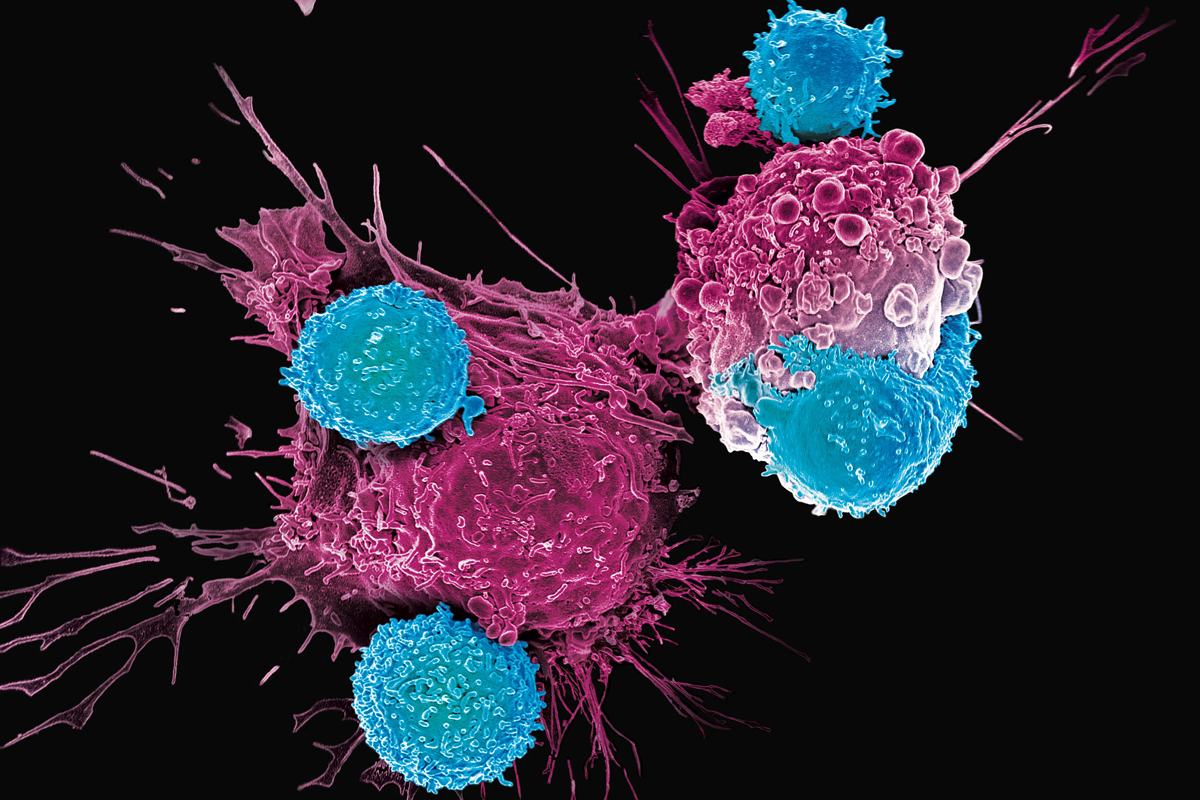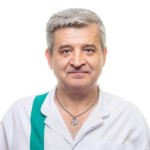-
 Medical articles
CAR T therapy: helps treat cancer when other methods fail
Medical articles
CAR T therapy: helps treat cancer when other methods fail
-
 Medical articles
Cancer incidence is steadily increasing: disappointing WHO forecast for 2050
Medical articles
Cancer incidence is steadily increasing: disappointing WHO forecast for 2050
-
 Medical articles
Stem cells bring hope to millions of people suffering from hearing loss
Medical articles
Stem cells bring hope to millions of people suffering from hearing loss
-
 Medical articles
TOP 10 clinics for oncology treatment 2023
Medical articles
TOP 10 clinics for oncology treatment 2023
-
 Medical articles
New methods for diagnosing cancer diseases
Medical articles
New methods for diagnosing cancer diseases
All news
Ovarian cyst treatment
Ovarian cysts are fluid-filled sacs in the ovary.Small cysts don’t give symptoms, large ones can cause: pressure, bloating, swelling, or pain in the lower abdomen.
Types of ovarian cysts: Follicle, Corpus luteum, Nonfunctional, Dermoid, Cystadenomas, Endometriomas.
Diagnosis: Pregnancy test, Pelvic ultrasound, Laparoscopy, CA 125 blood test.
Possible treatment: Watchful waiting, Medication, Surgery.
MedTour patients recommend clinics for the treatment of ovarian cyst:
Doctors for the treatment of ovarian cyst
Patient reviews
I decided to come to a Ukrainian clinic to remove myomas. With the help of the MedTour coordinator, I got to the Oxford Medical clinic. I underwent the necessary research and prescribed an operation. Now I feel great. The pains disappeared and other manifestations of the disease disappeared.
I have had 3 miscarriages. But my husband and I decided to try to get pregnant again. At the Adonis clinic, we passed various tests, and after a while the doctor performed the procedure, thanks to which my daughter was born! Insanely grateful to the MedTour website for help in consulting and contacting the Adonis clinic. And we are grateful to the doctors of the clinic for a successful pregnancy and a healthy daughter!
Frequently Asked Questions
Every month, a mature egg comes out of the ovary into the fallopian tube. This process is called ovulation. Most often, it is during ovulation that an ovarian cyst can occur. A cyst is a cavity shaped like a sac that is filled with fluid.
Cysts can form on the surface and inside the ovary. Usually, cysts are completely harmless to the woman and resolve themselves within a few months of occurrence.
Ovarian cysts are a common occurrence. Most women have had at least one ovarian cyst during their lifetime.
Despite the relative safety, a ruptured cyst may pose a threat to a woman’s health, so it is important to make timely diagnosis of the pelvic organs and, if necessary, to begin treatment in time.
Functional cysts
During the menstrual cycle, a follicle that is in the ovary matures and releases an egg during ovulation. If a regular monthly follicle continues to grow, it is called a functional cyst. There are two types of functional cysts:
- Follicular cyst. Around the middle of the menstrual cycle, the egg leaves the follicle and moves down the fallopian tube. A follicular cyst occurs if the follicle does not rupture and release the egg, but continues to grow.
- Yellow body cyst. When the follicle releases an egg, it begins to produce estrogen and progesterone for conception. This follicle is now called the luteal (corpus luteum). Sometimes fluid accumulates inside the follicle, causing the corpus luteum to become a cyst.
Functional cysts are usually harmless, rarely cause pain, and often disappear on their own within two to three menstrual cycles.
Dermoid cysts
This form is a benign tumor, also called a teratoma. A teratoma is caused by a disruption in embryogenesis. As a consequence, dermoid cysts may contain hair, skin elements, and teeth. Teratomas are subject to surgical treatment because they squeeze and displace normal ovarian tissue.
Cystadenoma
A cyst usually develops on the surface of the ovary and its contents are represented by watery or mucous contents. A cystadenoma is also known as a serous ovarian cyst.
A serous ovarian cyst can occur for reasons such as:
- Hormonal imbalance and impaired hormone production,
- Infections that are sexually transmitted,
- Operations which are carried out in the pelvic area,
- Inflammation of the genitals – endometritis, adnexitis, etc.
Some serous cysts have papillary outgrowths on the inner surface of the capsule and may develop into malignant tumors.
Endometrioma
The endometrium is the layer of cells that covers the inner surface of the uterus. In women of reproductive age, endometrial tissue is rejected during menstruation and may graft outside the uterus. In some cases, this leads to the formation of a cyst, which consists of endometrial cells.
Most cysts are dangerous to a woman’s health because they are functional and resolve themselves within a few months of appearing.
After the onset of menopause, other forms of cysts may occur, some of which, over time, turn into malignant neoplasms. This is why it is so important to have regular gynecological check-ups.
In some cases, for example, during sexual intercourse, the cyst may burst and its contents end up in the abdominal cavity. In addition, a ruptured cyst leads to bleeding and a serious complication in the form of inflammation of the peritoneum, called peritonitis.
If the cyst has a stem and is shaped like a mushroom, then there is a possibility of its twisting. In this case, blood flow to the cyst is impoverished and tissue necrosis occurs, which requires immediate surgical intervention, before severe consequences occur.
Large cysts affect the mobility of the ovary and can lead to twisting of the ovary itself. This process is accompanied by intense pain, nausea and vomiting.
Most cysts are asymptomatic and go unnoticed. In some cases, a woman may experience these symptoms:
- Sharp or pulling pain in the lower third of the abdomen on the side of the cyst, as well as pain in the lumbar spine and pubic bone.
- Rapid urination with a feeling of discomfort.
- Constipation due to compression of the rectum by a bulky ovarian cyst.
- Bloating, heaviness in the abdomen.
- Increased size of the abdomen.
You should see a doctor immediately if you have the following symptoms:
- Acute pain in the projection of the pelvic organs,
- Fever,
- Dizziness or weakness.
- Shortness of breath.
These symptoms may indicate a ruptured cyst or torsion of the ovaries. Both complications can have serious consequences if not treated early.
Some types of cysts can lead to reduced fertility, and these include endometriomas and polycystic ovarian syndrome.
Polycystic ovarian syndrome is characterized by multiple small cysts in the ovary, irregular periods and high levels of certain hormones. Because of irregular ovulation, there may be a decrease in a woman’s reproductive function.
- Hormonal imbalance, as well as taking clomiphene (Clomid), a fertility drug that stimulates ovulation in women.
- Pregnancy. A cyst that formed during ovulation can persist throughout pregnancy.
- Endometriosis. During endometriosis, tissue that is normally found on the inner wall of the uterus is moved with the flow of blood outside the uterus and, among other things, can form ovarian cysts. These cysts are also called endometriomas.
- Lingering pelvic organ infections. If the infection spreads to the ovary, it can be the direct cause of the development of a cyst.
- A history of cysts. If you have been previously diagnosed with an ovarian cyst, the chances of its recurrence are higher.
Experienced doctors
More often than not, foreign patients are treated by experienced doctors – associate professors and professors. In large medical centers abroad, doctors increase their qualifications and undergo internships in leading clinics in the United States and Europe.
Quality Medical Service
Medical centers represented on MedTour platform have international departments for working with foreign patients. This means that clinic representatives can meet patients at the airport, and accompany them through all stages of diagnosis and treatment.
Patients can ask any questions about the upcoming treatment – the coordinator assigned to the newly admitted patient speaks your language.
Consultations of doctors take place in the presence of a medical interpreter. This allows to avoid language barrier and misunderstanding between patient and specialist.
Modern diagnostic equipment
Medical centers are interested in high quality treatment outcomes and care about their reputation. As a result of high competition, leading medical centers are upgrading their diagnostic equipment every year – MRI, CT, PET, Ultrasound, and more.
Own laboratory
Modern medical centers are also equipped with their own laboratory, in which material after surgery for ovarian cysts can be examined. This is necessary to rule out possible cancerous processes, and correctly build up a further treatment tactic.
The clinic-based laboratory allows for effective and timely carrying out of all the necessary laboratory and pathohistochemical examinations without long waits for the patient.
Minimally invasive of treatment
Surgical treatment of gynecological diseases is performed using minimally invasive surgical techniques – laparoscopy and robotic surgery (da Vinci robot). The operations last for a shorter time, which reduces the duration of rehabilitation, without significantly affecting the patient’s general condition.
Thanks to minimally invasive surgery for ovarian cysts, the postoperative scar is less visible, reducing the overall cosmetic defect after treatment.
Treatment of ovarian cysts is carried out in the gynecological department of a multidisciplinary or highly specialized medical center. It is important that the hospital has an operating room equipped for gynecological operations, as well as its own laboratory.
The lab can perform blood tests for hormone levels and the CA-125 cancer marker, as well as examine a cyst removed during surgery for the presence of tumor cells.
MedTour patients recommend clinics in Turkey, Germany, Israel, Austria, Spain, and Italy for treatment of ovarian cysts.
To make an appointment with a foreign clinic for diagnosis and treatment of ovarian cysts, you must leave an application on the MedTour website. Our medical coordinator will contact you and answer all your questions. You can also send your medical documentation for an initial response from the clinic.
The MedTour team assists patients with organizing flights, transfers and accommodation in apartments within walking distance from the clinic. MedTour services are free of charge for the patient, you pay only in the clinic upon completion of diagnosis and treatment.
Diagnosis and treatment of ovarian cysts: a modern view of the problem (2021)
How are ovarian cysts diagnosed abroad?
Your doctor may suspect the presence of a cyst during your regular pelvic exam. The doctor will palpate the cyst and determine the preliminary size and consistency.
Overseas clinics use such techniques to reliably establish the diagnosis:
Ultrasound
An ultrasound uses high-frequency sound waves to produce images of your internal organs. Ultrasounds help determine the size, location, shape, and composition of the cyst.
CT/MRI
In some cases, your doctor may order a CT scan or MRI to examine your pelvic area and suspected cyst in more detail. This will also help differentiate the cyst from other conditions, including cancer.
Pregnancy test
A pregnancy test is performed to determine if the cyst is functional. If the pregnancy test is positive, the doctor states that the patient has a corpus luteum cyst.
Hormone level study
Additionally, the doctor performs laboratory diagnostics to determine progesterone and estrogen levels to detect possible hormonal imbalances.
Blood test for CA-125 levels
Blood levels of a protein called cancer antigen 125 (CA 125) are often elevated in women with ovarian cancer. If your cyst has a firm consistency and you are at high risk for ovarian cancer, your doctor may order this test.
What are the current treatments for ovarian cysts?
Treatment depends on your age, the type and size of the cyst, and the symptoms. The following therapies are used abroad:
Active surveillance
If the cyst is small and filled with fluid, the doctor may recommend monitoring the cyst for several months. During this time, examinations and ultrasounds are performed several times. If there are no symptoms, most cysts will resolve on their own.
Medication support
In order to prevent the appearance of new cysts, oral contraceptives are prescribed. Contraceptives reduce the risk of developing an ovarian cyst, but do not reduce the size of existing cysts.
Surgical Treatment
Surgical treatment is recommended if the cyst is growing for two or three menstrual cycles, or if it causes persistent pain. The cyst can be removed in isolation, with the ovary completely intact. Such an operation is called a cystectomy of the ovary. In some cases, the doctor may recommend removal of the cyst together with the ovary – an oophorectomy.
Published:
Updated:


Information on this webpage verified by the medical expert





Добрый день! Хочу оставить отзыв благодарности .
Дайнис Леонидович, я от чистого сердца благодарю Вас, за такую непростую в моем случае операцию, и то, как легко и быстро все прошло! Сегодня второй день после операции и я чувствую себя хорошо не только физически, но и психологически! Все прошло на столько комфортно, что я практически не переживала. В целом людям свойственно волноваться перед операцией, но с Вашей командой, анестезиологов, мед персонала я чувствовала что все под чутким контролем!! Я желаю всем здоровья!